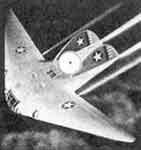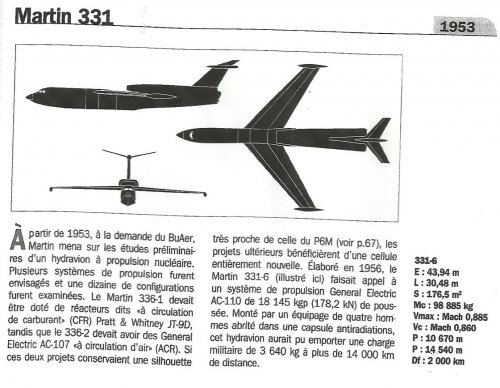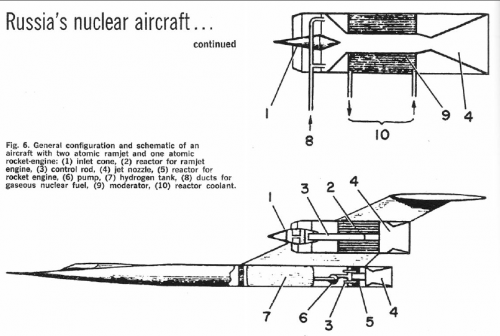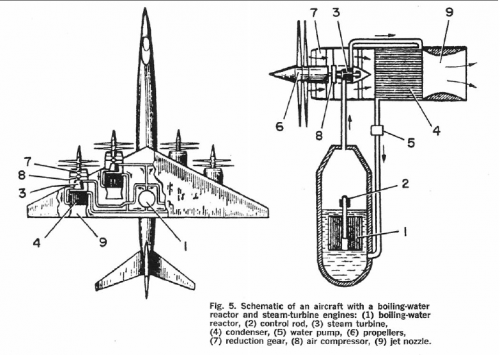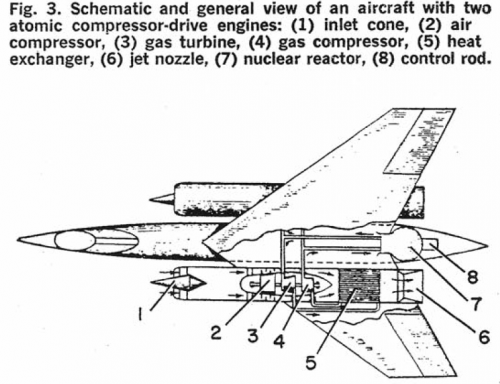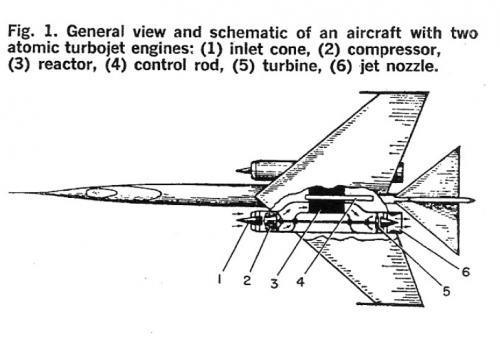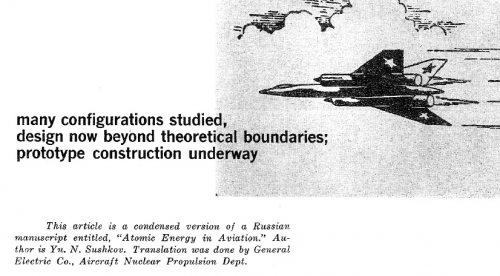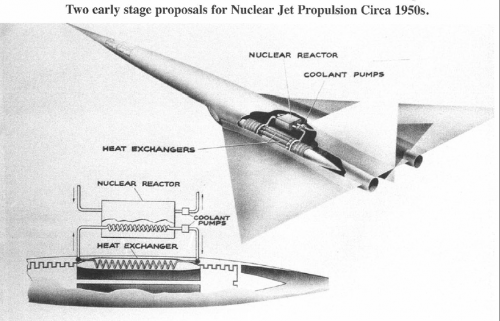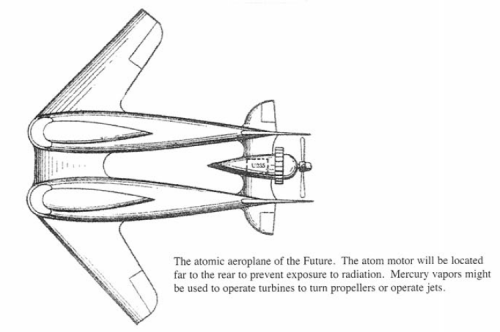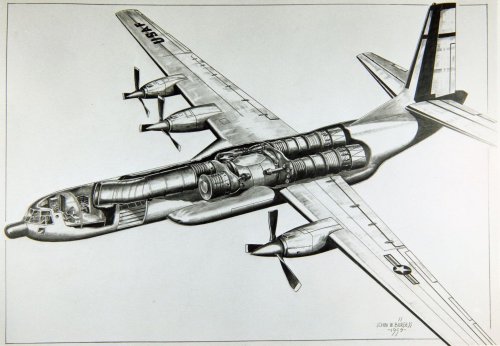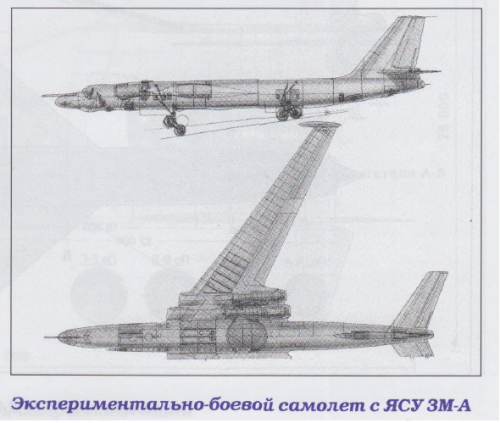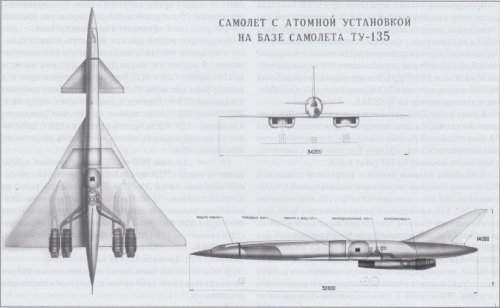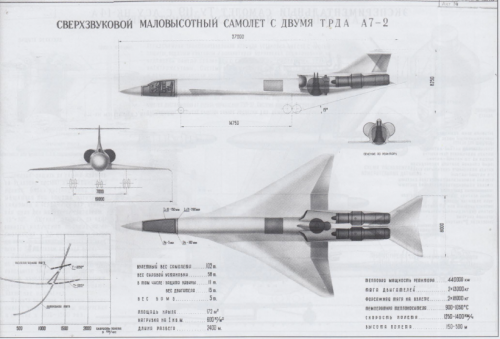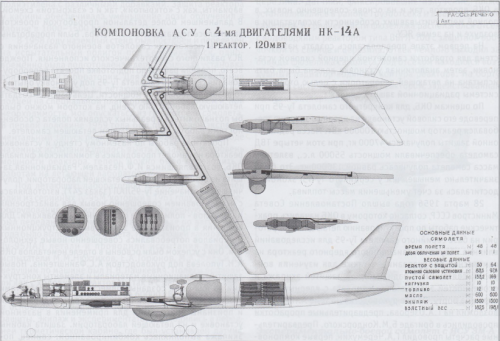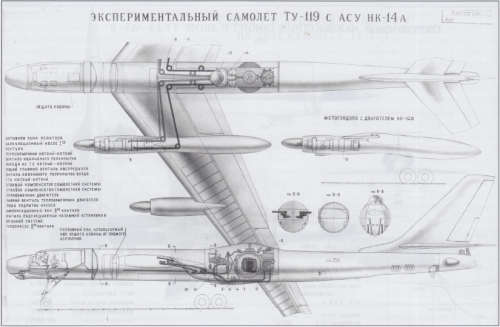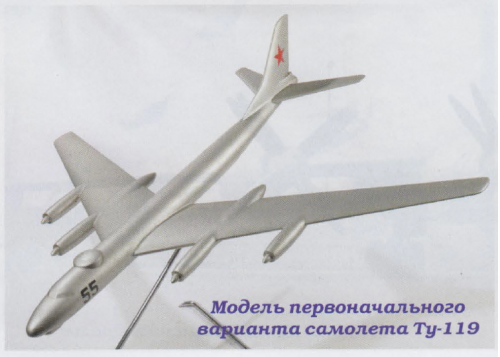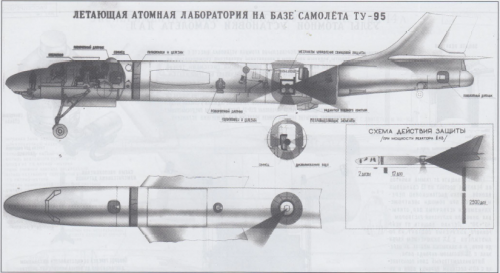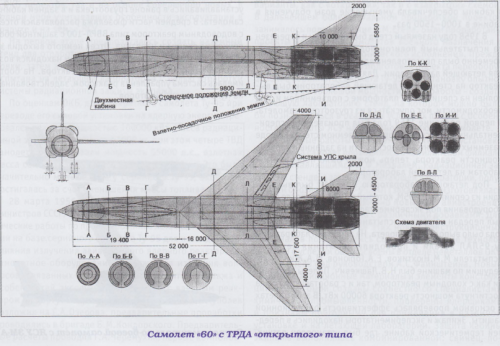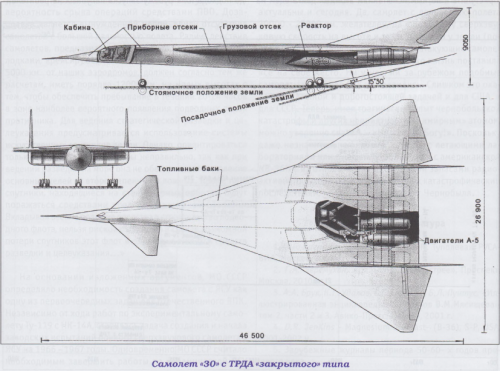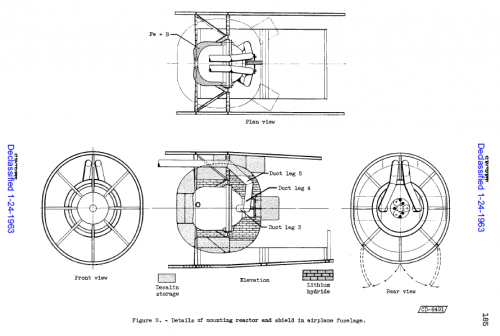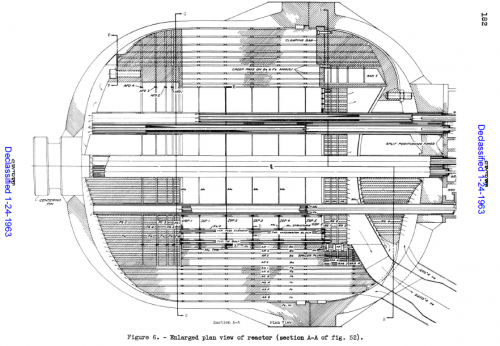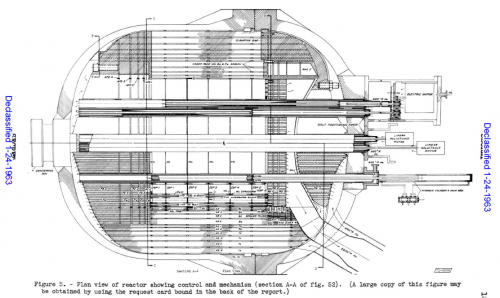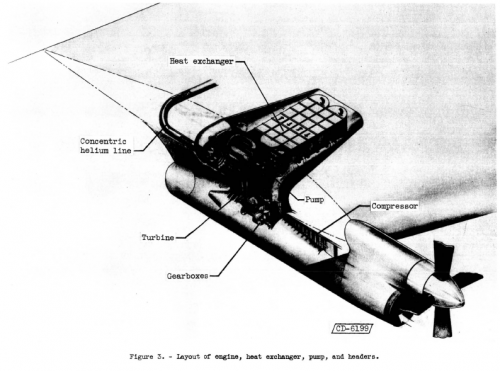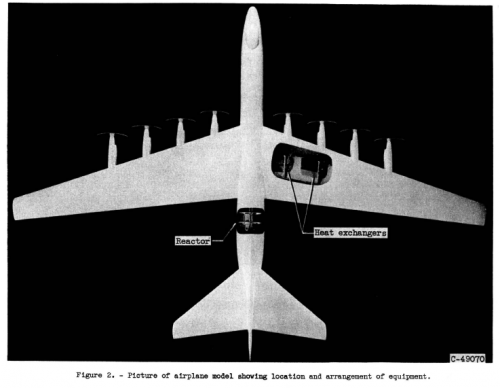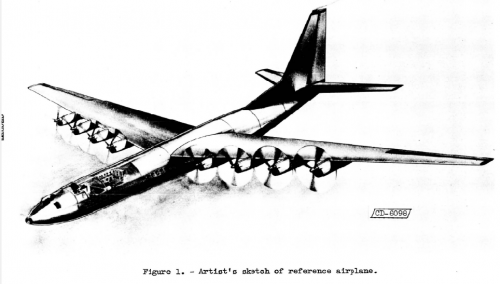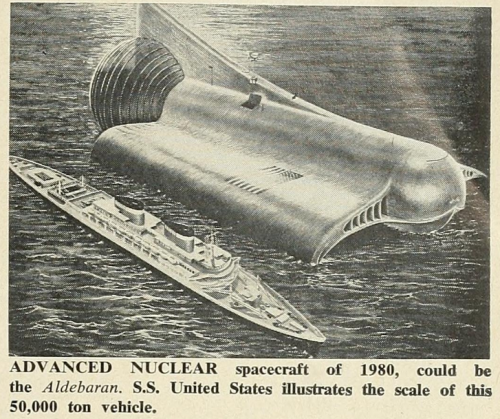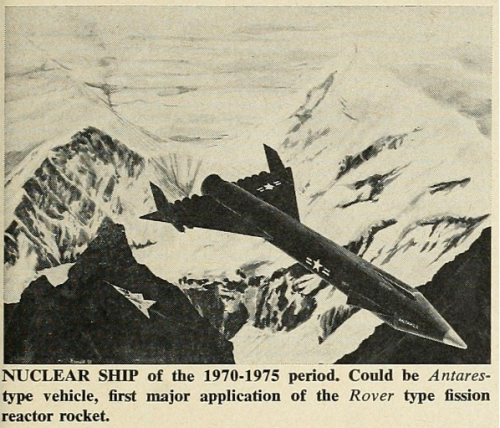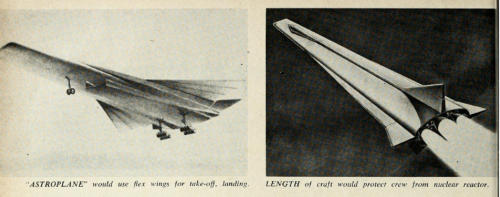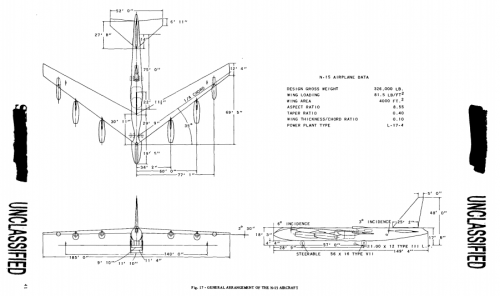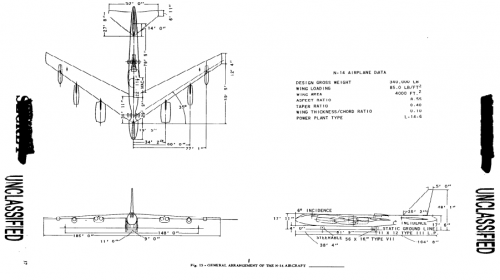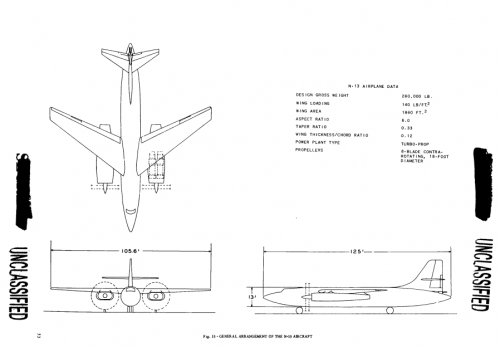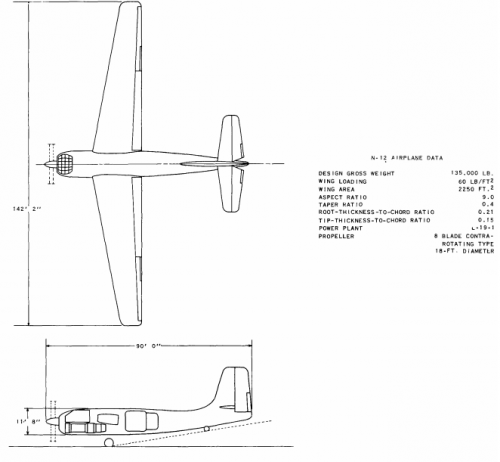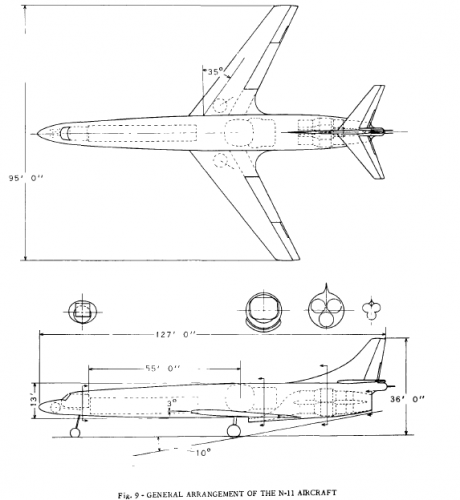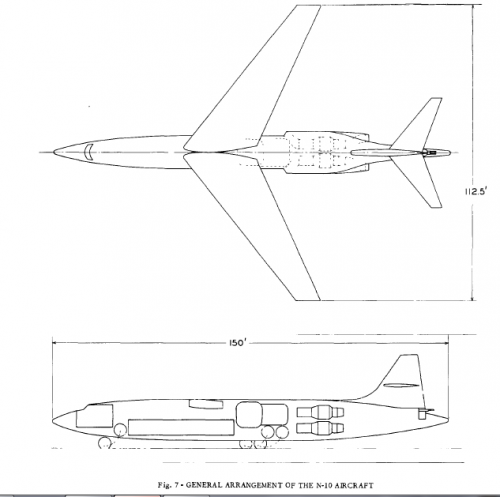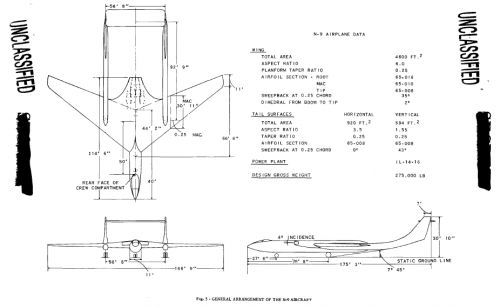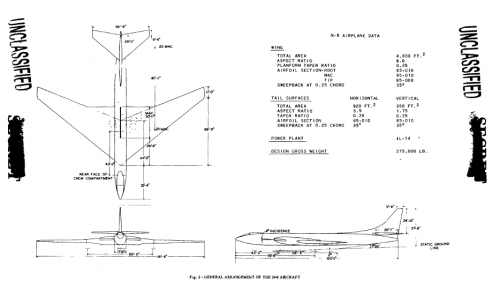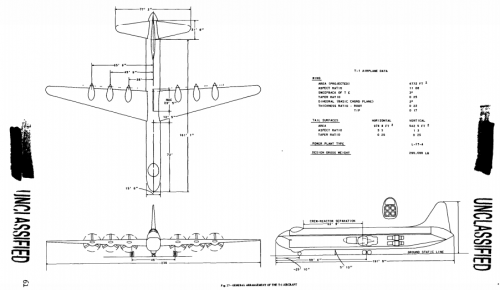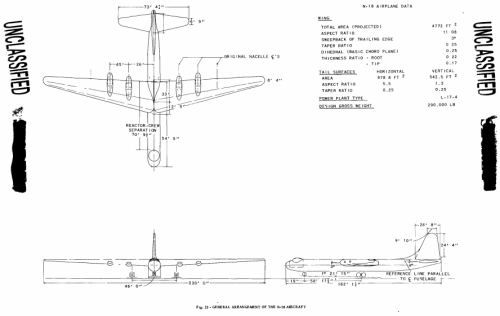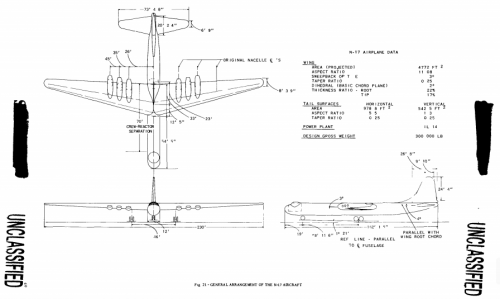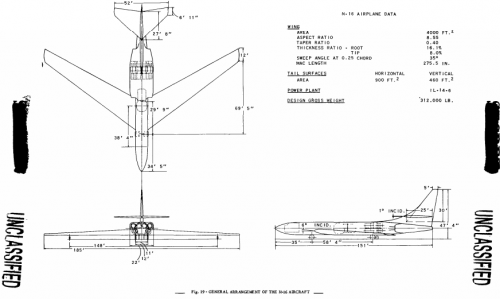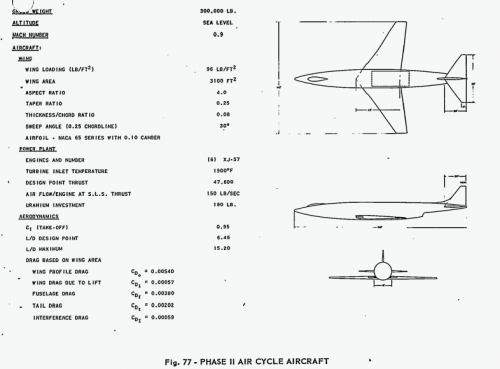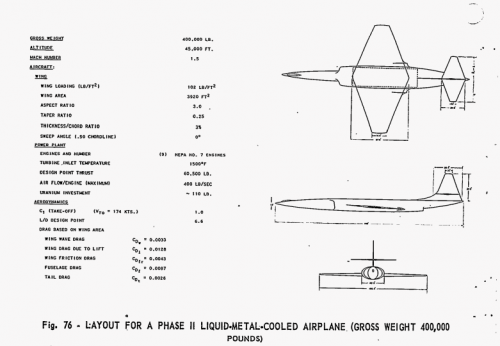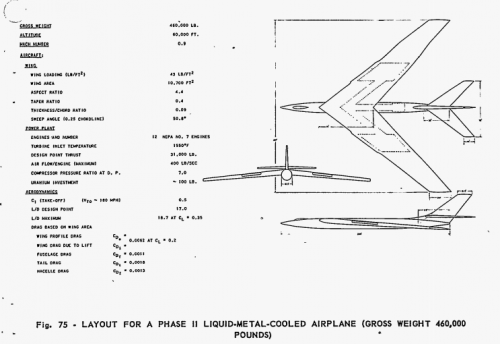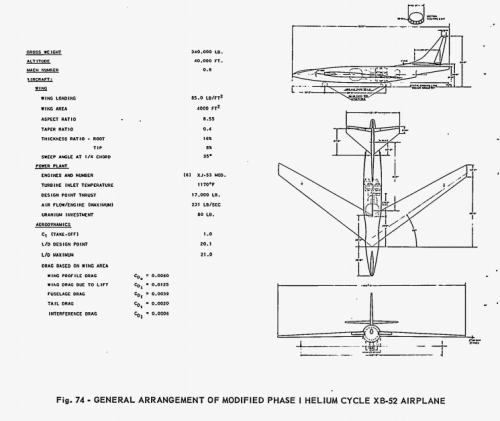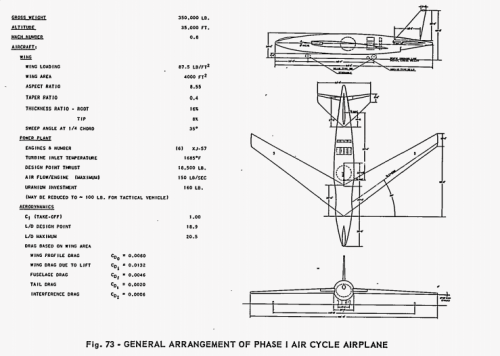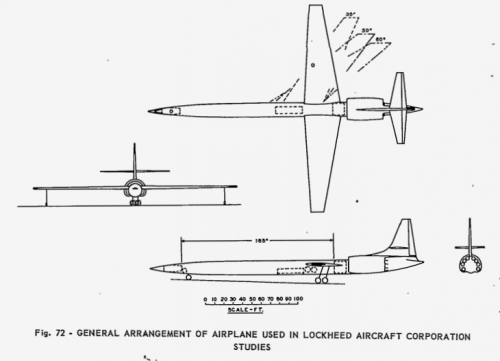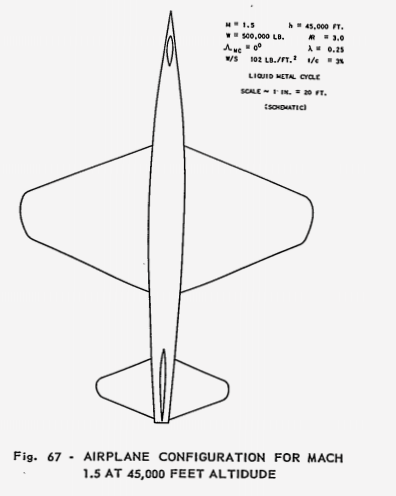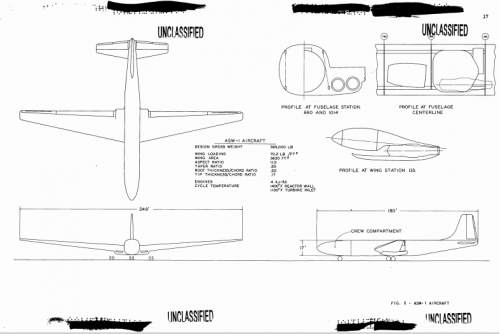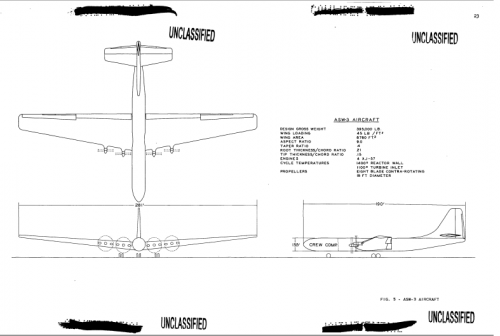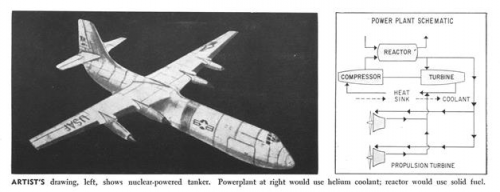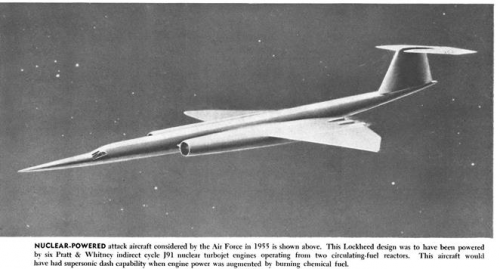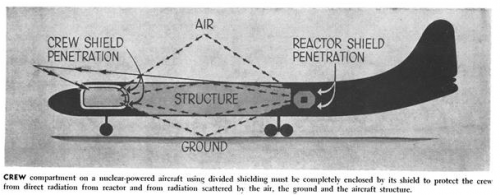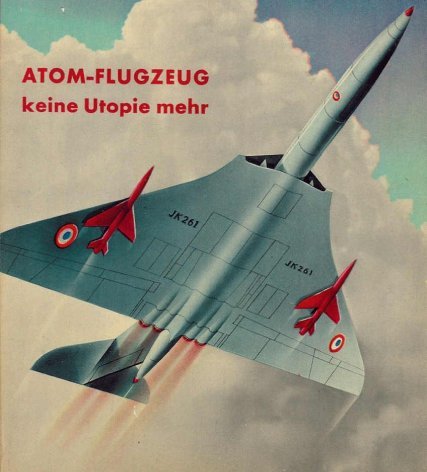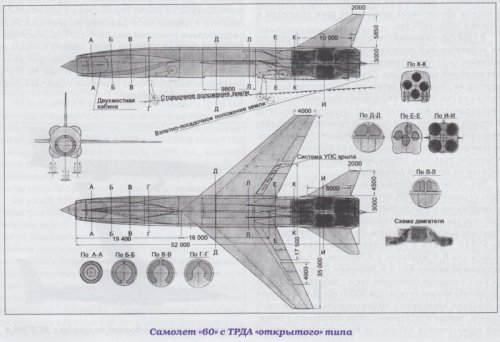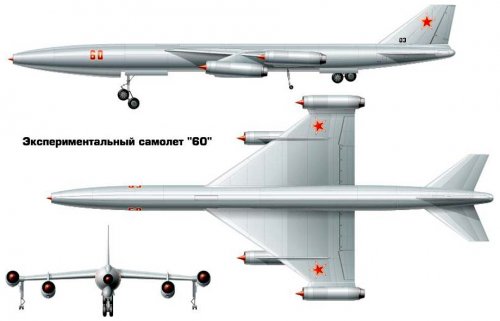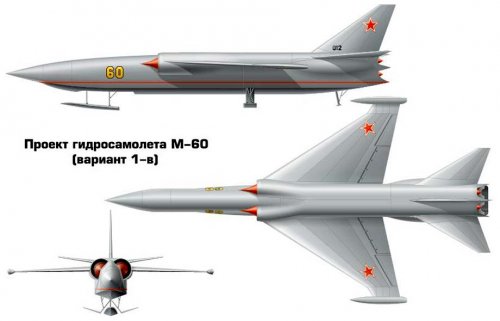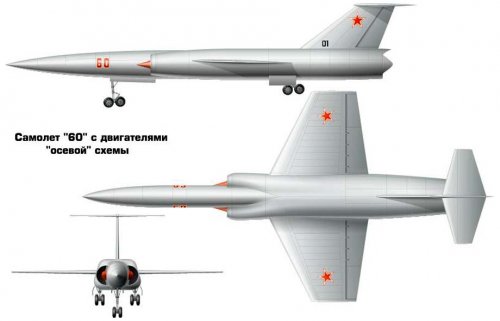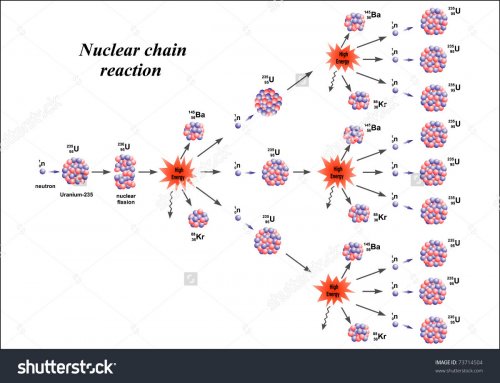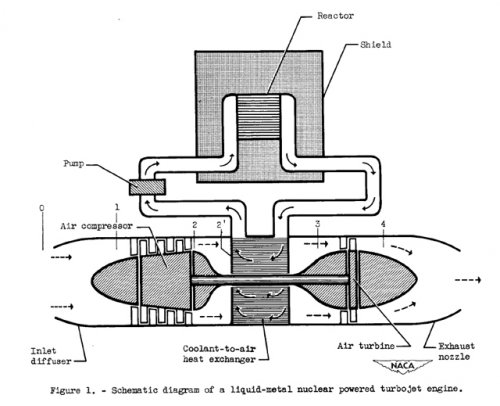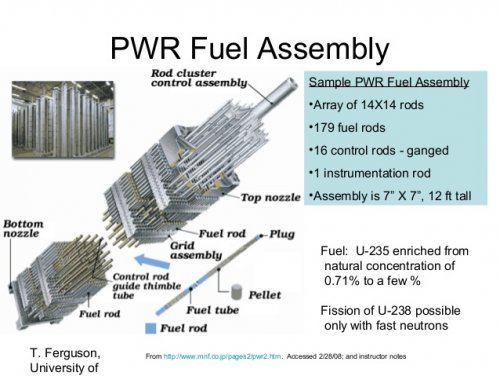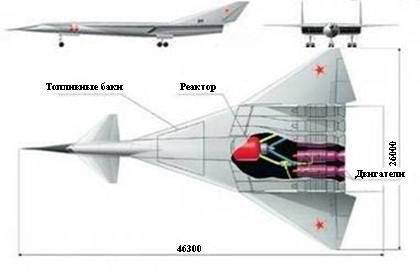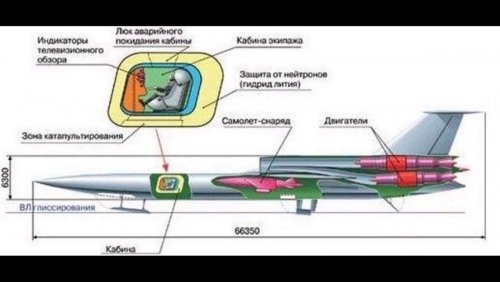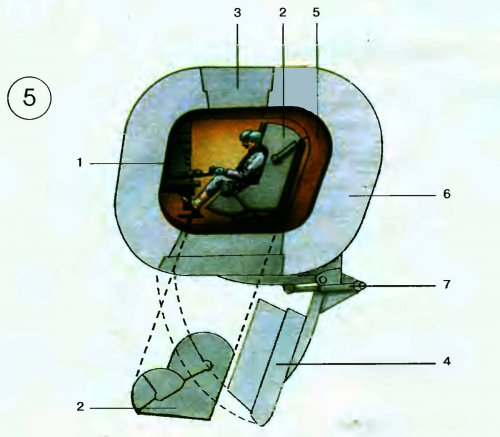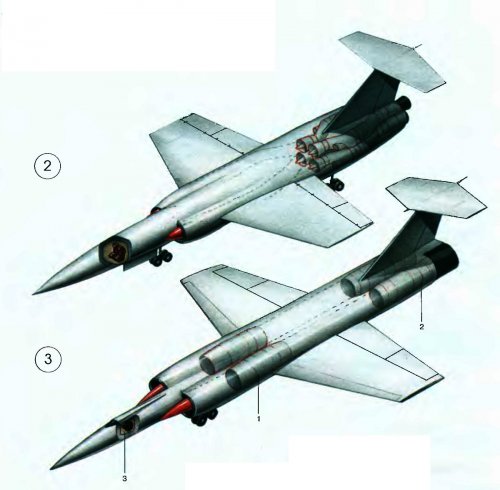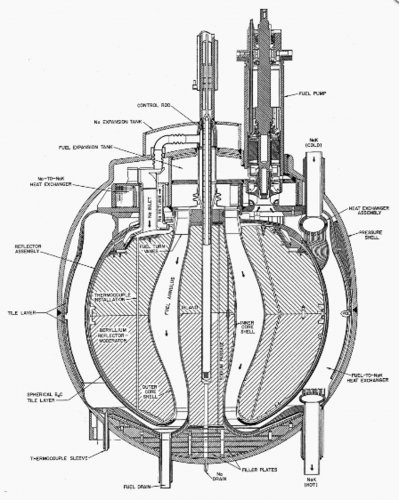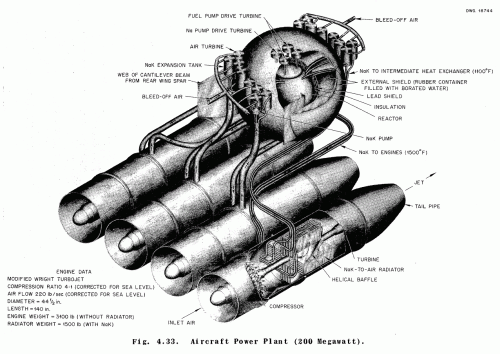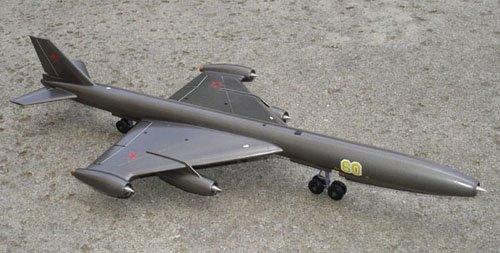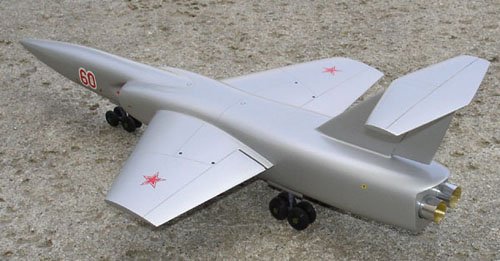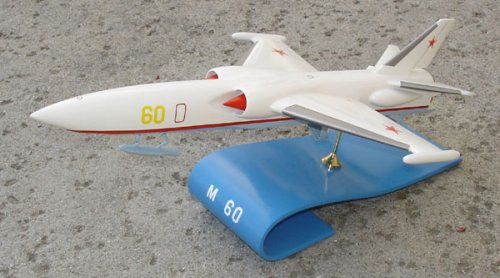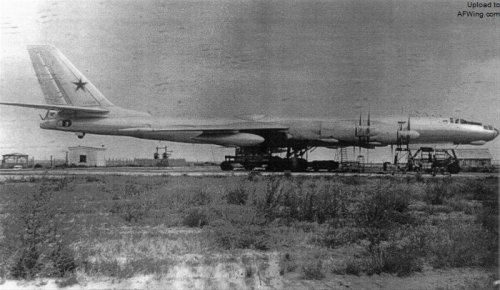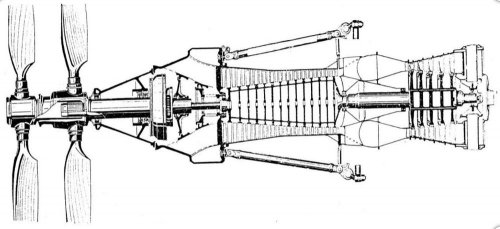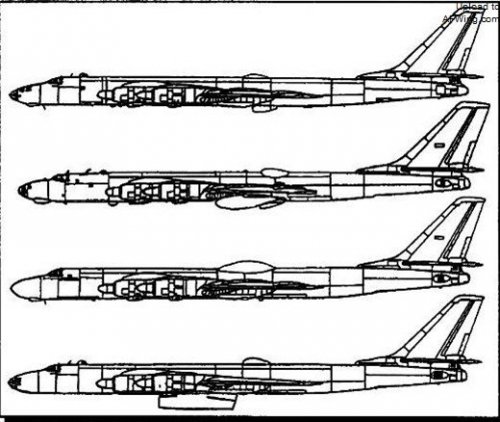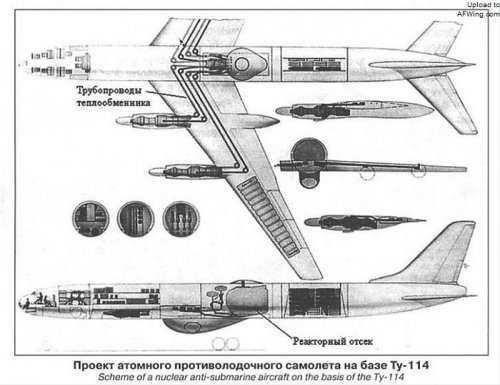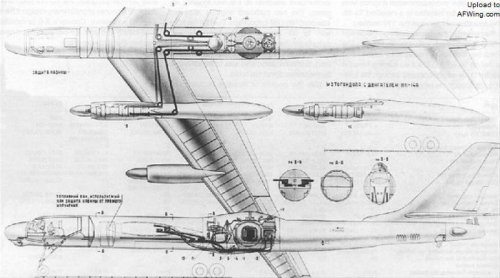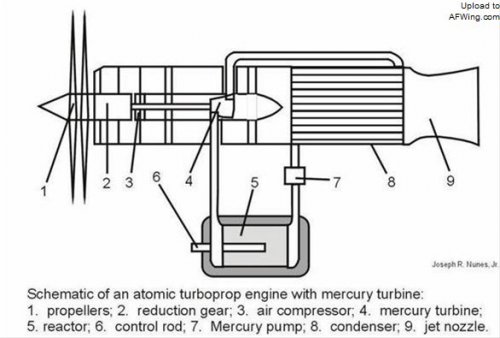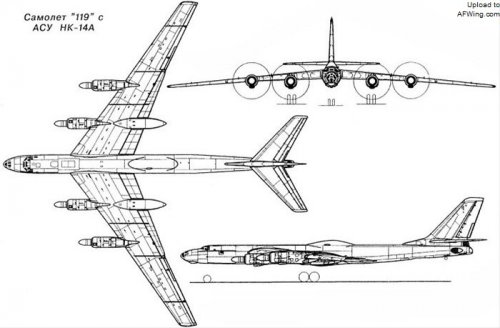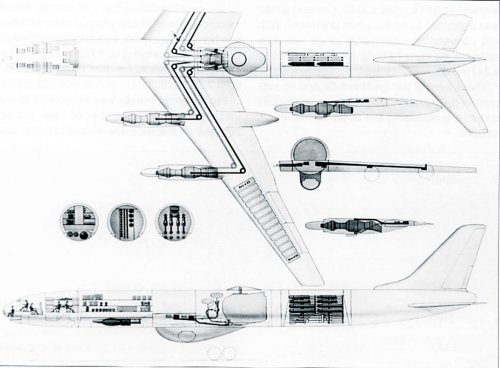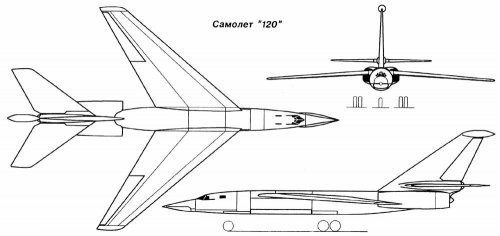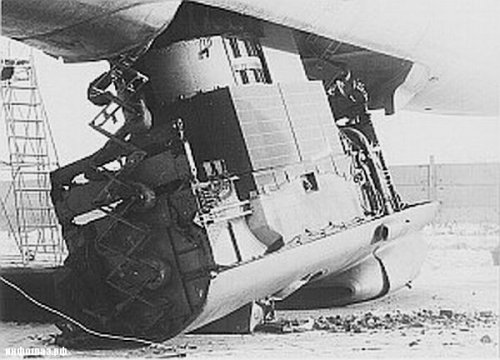"Tupolev is well aware of the complexity of the task, the Bureau of the Group estimated that the manufacture of a prototype to up to 20 years time! Because a lot of technology is still immature or there are research and development problems, so the aircraft really shape to be time. They considered the first experimental nature of the nuclear power as a supporting power of the aircraft until the late 1970s or early 80s to launch. The purpose of the current program is to explore the feasibility of the technology. At the end of 1955, the designers began the first phase of the design and testing of a small nuclear reactor. In March 1956, the Soviet ministerial meeting designated Tupolev as soon as possible to produce flight test platform. Tupolev engineers decided to convert the existing chart-95M bomber into a "flying nuclear laboratory". The final figure -95LAL turned out.
By 1958, after the nuclear reactor was installed, the aircraft was ready for ground phase testing. During the summer of 1958, the nuclear power plant began testing. Shortly after the test, the designer was surprised to find that the reactor power reached the previously set requirements. The expert group immediately decided to begin preparations for the flight pilot phase. Between May and August 1961, Figure -95LAL completed 34 flight test missions. "
"All of the test flight, Figure -95LAL nuclear power plant are in a closed state. The main purpose of the flight is to obtain the flight parameters of the modified aircraft to verify that the machine is suitable as the ultimate nuclear power plant equipped with aircraft. A large amount of liquid sodium, beryllium oxide, cadmium, paraffin and fine steel are used to make the radiant cockpit - the core part that protects the pilots from lethal radiation. The result is so exciting Tupolev Design Bureau. It is estimated by the instrument that the radiation level in the cockpit is low, which paves the way for the design of a new body that can meet the actual requirements. The next stage of the program is to produce a new verification machine. This design from the outset will be nuclear energy as its main driving force. This new verification machine number 119 is designed on the basis of Figure -95.
The main difference with the general figure -95 is that there are two of its four engines for the NK-14A turboprop engine with new heat exchangers installed. NK-14A is a very similar direct-loop engine. The main difference is that the air through the compressor, and did not lead to the reactor, but directly to the heat exchange system. At the same time, the heat generated by the nuclear reactor passes through the fluid to the heat exchange system. The combination of these two forces will allow the engine to produce the thrust required. The other two outboard engines are NK-12M. "
"At the same time when the Kuznetsov Design Bureau developed the engine, the schematic of the 119 aircraft was completed. The inside of the drawing shows that the internal magazine will place the reactor. From the reactor to the engine connecting pipe through the main body, and then forked up to the two wings, and ultimately directly connected to the two NK-14A engine heat exchanger. Tupolev estimated that by the end of 1965, 119 would take the airport takeoff and landing tests. After the test, the mixed engine group of No. 119 was replaced by four all-in-one NK-14A engines. The replacement of the NK-14A is different from the earlier test flight used. New engine changed from Figure -114 Business flight using NK-14A. However, the original drawings did not make any changes to the 119 facelift engine. Perhaps this episode seems to imply that the whole plan is stalled. In August 1966, due to budget constraints and major design bureaus took over the design task of developing new conventional aircraft, time-consuming, and not very safe figure-95LAL project came to an end. The cancellation of the plan did not mean that the Soviet Union had terminated its nuclear-powered aircraft research project. Because the same period, the other nuclear-powered aircraft project did not dismount. For example, later on the implementation of No. 117 in the 120 project. 120 is different from 119, it is nuclear power supersonic bomber project verification machine."
Around this project, the Soviet Union made a lot of research. The Soviet Union will focus on the new turbojet engine research and development and re-layout of the nuclear reactor system research. The newly designed system is required to provide more protection to crew and airborne avionics systems. 120 is expected to install the two new turbojet engines designed by the Kuznetsov Design Board. This time the installation of the reactor is different from the 119 practice, but installed in the tail. The reason is simple, the reactor from the cockpit farther the better, is to reduce the radiation on the crew of the most vulnerable to the law. The crew consisted of pilots, co-pilot and navigator, and their seats were placed in a heavy, confined, radiation shielded cockpit. 120 with 45 degrees swept wing, rear swept wing and front triangular landing gear design. From the appearance point of view, compared with the previous use of the traditional power of the Tupolev series bombers compared to 120 does not seem bloated. The goal of the Tupolev Design Bureau was to complete all R & D and testing work in the late 1970s and then put it into use. Unfortunately, 120 did not wait until that day. And 119 the same reason, 120 project in 119 after dismount was canceled. This plane did not even made the prototype of the 120 long-range fighting dream can only dusty in the yellowing of the design drawings.
Tupolev design bureau has made the next attempt. It is 132. But 132 is generally considered to be an attacker, not a bomber required by the plan. The installation of the power plant is similar to that of 120, and the reactor is mounted at the tail, before the two turbojet engines. And the entire power system all on the tail, unlike 119 and 120 there are still many auxiliary parts installed in the machine throughout. This engine can be operated either by conventional kerosene and by nuclear power. However, the Soviet designers only intend to use kerosene for aircraft takeoff and landing. All kerosene is poured into a special cabinet type container in front of the reactor. The other parts of the aircraft are almost the same as 120, but the right inside made some changes.
(Engine is like this?)
http://www.secretprojects.co.uk/forum/index.php?action=dlattach;topic=855.0;attach=575109;image
(Or like this? In this case air route to conbustion chamber or to mercury to air heat exchanger is selected by control valve?)
http://www.secretprojects.co.uk/forum/index.php?action=dlattach;topic=855.0;attach=575139;image
132 is expected to use delta wing, which is likely to be considered an important reason for attack aircraft. The tail is also used in the back sweep design, the level of stability in the wing roof. Technical problems quickly let 132 into a dead end. 132 was canceled in the mid-1960s. The last effort of the Tupolev Design Bureau was a plane that had not yet been completed. The aircraft is designed to be a supersonic bomber designed to compete with the US-based B-58 medium bomber.
However, by the funding, technology, security and other factors under the influence of the Soviet Union in the late 60's nuclear power aircraft enthusiasm finally exhausted. The Soviet Union decided to end all the projects launched, while giving up the results of the feasibility study. In general, the reason for the end of the plan is that the nuclear strike capability of the intercontinental ballistic missiles on the Soviet nuclear submarines is more accurate and cheaper (relative to the development of nuclear power aircraft). For the implementation of the planned economy of the Soviet Union, to strengthen the already underwater nuclear strike capability than to continue in the nuclear-powered aircraft this project burn more cost-effective. "
Of course No.3 drawing is little strange. Condenser(heat exchanger) should be located at front of the turbine.
I imagine that NK-14A engine shape is almost same as NK-12 turboprop engine. Nk-14A had condenser(mercury to air heat exchanger) instead of NK-12 conbustion chamber. Mercury to air heat exchanger must be very large compared with conbustion chamber.

